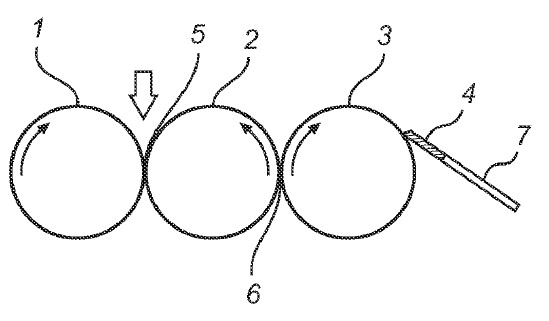Guest Post by Ken Kuang, Torrey Hills Technologies
Introduction
Thick Film Material is an ink paste produced through dispersing metal powders, glass powders, and inorganic oxides with organic solvent in a three-roll mill. The thick film pastes are screen-printed on ceramic boards or green sheets as circuit patterns and then fired at high temperatures. The thick film pastes are mainly used for various electronic components such as multilayer chip capacitors, chip resistors, etc. These components are used in volume in personal computers, mobile phones, etc. Depending on the application, the paste can act as conductive materials, resistor materials and insulating materials. In conductor compositions, the conductive phase is generally a precious metal or mixture of precious metals. In resistor compositions, the conductive phase is generally a metallic oxide. In dielectric compositions, the functional phase is generally a glass or ceramic.
Ingredients of Thick Film Paste
A thick film ink comprises main functional powder, glass frit, transitional metal oxide, dispersing agent, and organic medium, which is typically solvent and organic binder. It serves as a vehicle to disperse the main functional powder.
There are three critical parameters of the paste that related to screen printing:
- ratio of the solid contents
- particle size distribution
- viscosity
The solids content (active element and adhesion element) as a ratio of the total weight of the paste will dramatically affect the ability of the paste to be screened, as well as the density of the fired film. If the solids content is high, the fired film will be dense, but it will also be difficult to screen. A typical value for thick-film conductors is 85-92%.
The thick film paste particle size distribution controls the screenability and the properties of the fired film. For screenability, it is desirable to have very small particles, but very small particle size in thick film resistors produce parameters that are skewed and not suitable for most circuit applications. Larger particles will obviously be more difficult to screen and may actually block one or more screen openings. Particle size distribution may be measure in a manufacturing environment by the use of a fineness-of-grind (FOG) gauge.
Viscosity is related to the molecular attraction within the body of the liquid and is the ratio of the shear rate of the fluid (in sec-1) to the shear stress (in force per unit area). The viscosity measurement is usually employed by spindle method.
To mix or to mill?
The ingredients (the particulate inorganic solids and the organic medium) of the paste are first weighed together in a container. The components are then vigorously mixed to form a uniform blend, and are then passed through three-roll mill to achieve a good dispersion of particles. A three roll mill is composed of three horizontally positioned rolls rotating at opposite directions and different speeds (Fig. 1). When material is passed through the first nip, between the feed roll and the center oil, it is subjected to high shear force resulting in mixing, refining, dispersing and/or homogenizing of the material. When the material passed through the second nip, between the center roll and the discharge roll, it is again subjected to high shear force resulting in further mixing, refining, dispersing and/or homogenizing of the material. Milled material is removed from the apron roll by a knife that runs against the roll. The cycle can be repeated to improve dispersion until equilibrium is reached. A Hegman gauge is used to determine the state of dispersion of the particles in the paste. The satisfactory dispersion will give a fourth scratch point of 10-18 μm. The viscosity of the paste is typically within the following ranges when measured at room temperature on Brookfield viscometers at low, moderate and high shear rates.
Figure 1. Schematic drawing of three-roll mill: (1) feed roll, (2) center roll, (3) discharge roll, (4) discharge blade, (5) first nip, (6) second nip, and (7) apron
The following video from Torrey Hills Technologies shows the set-up and operation of a laboratory scale three roll mill.
Conclusion
The three-roll mill has been used in thick film materials manufactures. The mills with different sizes are good for laboratories and small production runs to large batch production. Our products [4] provide a great deal of flexibility in designing a machine that best meets the customers’ specific application. We pursue our products to reach the most precise requirements for dispersing, refining, shearing, particle size reduction, homogenizing, blending, mixing and de-aearting. We continue to seek out unique applications with our high quality product and service.
References:
- Satoru Fujii, Hirotoshi Watanabe, Conductive ink composition and method of forming a conductive thick film pattern, 1992, US Patent 5366760
- Charles C. Y. Kuo, Thick film Resistive Paint and Resistors made therefrom, 1985, US Patent 4639391
- Satorn Yuhaku, Seiichi Nakatani, Tsutomu Nishimura, and Toru Ishida, Dielectric paste and method of manufacturing the paste, 1986 US Patent 4812422
- https://www.threerollmill.com


Great article! Hope the readers like it!